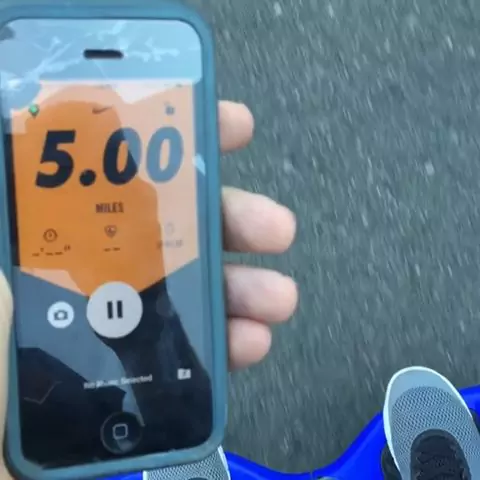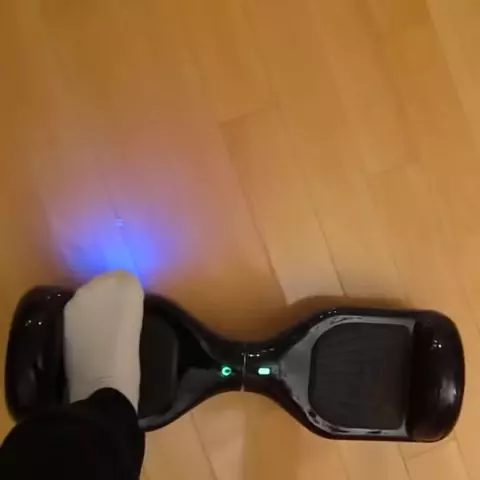There are a few things to keep in mind when learning how to ride a hoverboard. First, make sure the hoverboard is turned on and that the batteries are charged. Then, stand on the board with both feet shoulder-width apart.
Lean forward slightly and place your weight on the front of the board. Keep your back straight and your knees bent as you begin to glide forward. To turn, simply shift your weight in the direction you want to go.
You can also stop by leaning back slightly and placing your weight on the rear of the board. Practice in an open area until you feel comfortable riding before taking it out in public.
Contents
- 1 Key Takeaways
- 2 How to Ride a Hoverboard for the First Time?
- 3 How to Ride a Hoverboard Without Falling?
- 4 How to Ride a Hoverboard Fast?
- 5 How to Ride a Hoverboard With a Seat?
- 6 What is the Correct Way to Ride a Hoverboard?
- 7 Are Hoverboards Hard to Balance?
- 8 Are Hoverboards Meant to Be Ridden Inside?
- 9 FAQS
- 10 Final Thoughts
Key Takeaways
- Before you start riding, make sure that your hoverboard is fully charged.
- Once your hoverboard is charged, turn it on by pressing the power button.
- Place your feet on the foot pads of the hoverboard and lean forward slightly to begin moving.
- Use your body weight to control the speed and direction of the hoverboard – lean forward to go faster and backward to slow down or stop.
- To turn, simply shift your weight in the direction you want to go.
- When you’re finished riding, press the power button to turn off your hoverboard.
How to Ride a Hoverboard for the First Time?

Hoverboards are a great way to get around, and they’re a lot of fun too. But before you can start zooming around on your new toy, there are a few things you need to know. Here’s everything you need to know about how to ride a hoverboard for the first time.
First, let’s talk about safety. Hoverboards can be dangerous if you don’t know what you’re doing. Always wear protective gear when riding, including a helmet, knee pads, and elbow pads. And always make sure the area around you is clear of obstacles before getting on your hoverboard.
Now that we’ve got that out of the way, let’s talk about how to actually ride a hoverboard. The first thing you need to do is stand on the board with both feet shoulder-width apart. Then lean forward slightly and begin pressing down with your toes to move forward.
To turn, simply shift your weight in the direction you want to go – left to turn left, and right to turn right. To stop, just stop pressing down with your toes and wait for the board to come to a complete stop. That’s all there is to it!
With a little practice, you’ll be riding like a pro in no time at all. Just remember to stay safe and have fun!
How to Ride a Hoverboard Without Falling?
Hoverboards are a relatively new invention, and as such, many people are still trying to figure out the best way to ride them. Here are a few tips on how to ride a hoverboard without falling:
1. Start by practicing on a flat, level surface. Once you feel comfortable riding on a flat surface, you can try riding on slightly inclined surfaces. However, avoid steep inclines at first as they can be more difficult to navigate.
2. Pay attention to your body position when riding the hoverboard. Keep your body upright and center your weight over the board. This will help you maintain balance and control while riding.
3. Be careful of obstacles in your path. Hoverboards can easily roll over small objects like pebbles or twigs, so be mindful of what’s in front of you when riding. Also, avoid large bumps or cracks in the ground as they could cause you to lose control and fall off the board.
4. If you do start to lose balance or feel like you’re going to fall, jump off the hoverboard immediately!
Jumping off is much better than falling off, as it will help minimize any injuries that could occur if you were to hit the ground directly with all your weight. With these tips in mind, anyone can learn how to safely ride a hoverboard without falling!
How to Ride a Hoverboard Fast?

Hoverboards are the latest craze, and everyone wants to know how to ride one fast. Here are a few tips to help you catch some serious air on your hoverboard.
1. Start by practicing riding in an open area with plenty of space. This will help you get a feel for the board and how it moves.
2. Once you’re comfortable riding, try going up and down small hills or ramps. This will help build up your speed so you can really take off when you want to.
3. When you’re ready to go fast, find a long stretch of smooth pavement or concrete. Start at one end and slowly build up speed until you’re moving as fast as you can. Then lean forward slightly and let gravity do its work! You’ll start picking up speed quickly – just be careful not to fall off when you reach top speeds.
4. If you want to show off your skills, try doing some tricks like spins or 360s once you’ve gotten comfortable riding at high speeds.
How to Ride a Hoverboard With a Seat?
Hoverboards with seats are becoming increasingly popular, as they offer a fun and convenient way to get around. If you’re thinking about investing in one, or just want to try it out, here’s what you need to know about riding a hoverboard with a seat. First things first: make sure your hoverboard is properly inflated before attempting to ride it. Once you’ve done that, sit on the seat and position your feet on the foot pads. You may need to experiment a bit to find the sweet spot – everyone is different.
Now comes the tricky part: starting off. To do this, lean forward slightly and apply pressure to the foot pads. The hoverboard will start moving forward slowly. As you gain confidence and speed up, you can lean back in your seat.
Just be careful not to lean too far back, or you could end up doing a faceplant!
If you need to stop, simply apply pressure to both foot pads equally and slowly bring yourself to a halt. And that’s all there is to it!
With practice, you’ll be zipping around on your hoverboard like a pro in no time at all.
What is the Correct Way to Ride a Hoverboard?
If you’re one of the many people who’ve recently gotten a hoverboard, you might be wondering how exactly you’re supposed to ride it. Here are some tips to help you get started. First, make sure that your hoverboard is properly inflated.
This is important for both safety and performance. You can find the recommended tire pressure in the owner’s manual. Next, position yourself on the board in a low stance with your weight evenly distributed between both feet.
When you’re ready, lean forward slightly and begin pressing down on the foot pads to start moving forward. To turn, simply shift your weight in the direction you want to go. To stop, gently lean back and raise your heels off of the foot pads.
Once you’ve come to a complete stop, be sure to put your feet back down on the pads in a low stance so that you don’t lose balance and fall off. With a little practice, riding a hoverboard will become second nature. Just remember to stay safe and have fun!
Are Hoverboards Hard to Balance?

Hoverboards are not difficult to balance once you get used to them. It is similar to riding a skateboard or rollerblading. The key is to keep your weight evenly distributed and practice until you feel comfortable.
Here are some tips:
-Start by standing on the hoverboard with both feet. Bend your knees slightly and lean forward slightly so that you are in a comfortable, stable position.
-Practice moving your feet around until you get a feel for how the hoverboard responds. Remember that small movements will result in big changes in direction, so don’t overdo it!
-Once you’re comfortable moving your feet, try gently shifting your weight from side to side. This will help you turn the hoverboard. Again, small movements go a long way!
-Now it’s time to start practicing going forward and backward. Lean forward ever so slightly to move forwards, and lean back to move backward. Remember to keep your weight balanced!
-If at any point you feel like you’re losing control, just step off the hoverboard
– it’s not worth risking an injury!
With practice, anyone can master balancing on a hoverboard. Just take it slow at first and soon you’ll be zipping around like a pro!
Are Hoverboards Meant to Be Ridden Inside?
Hoverboards are battery-powered devices that allow users to glide across a smooth surface with little effort. They have become increasingly popular in recent years, especially among young people. Many people enjoy riding them indoors because they can be used in small spaces and don’t require any special gear or setup.
However, there are some potential risks associated with indoor hoverboard use. For example, if the device hits something hard like a table or chair leg, it can cause damage to the object and potentially injure the rider. Additionally, indoor surfaces are often not as smooth as outdoor ones, which can make riding a hoverboard more difficult and even dangerous.
Therefore, it’s important to consider both the risks and rewards of indoor hoverboard use before making the decision to ride one inside your home.
FAQS
Is It Easy to Ride a Hoverboard?
No, it is not easy to ride a hoverboard. There are many factors that come into play when riding one. The weight of the rider, the terrain, the weather, and even the type of hoverboard can all affect how easy or difficult it is to ride.
Final Thoughts
Hoverboards are the latest craze, and if you want to be a part of the trend, you need to know how to ride one! Here are some tips to get you started:
1. Start by standing on the hoverboard with both feet. If you’re feeling unsteady, hold onto something nearby for support.
2. Once you’re steady, gently lean forward or backward to start moving.
3. To turn, simply shift your weight in the direction you want to go.
4. To stop, stand up straight and balanced on the board.
5. And that’s it! Now just practice until you feel comfortable riding around on your new hoverboard!


